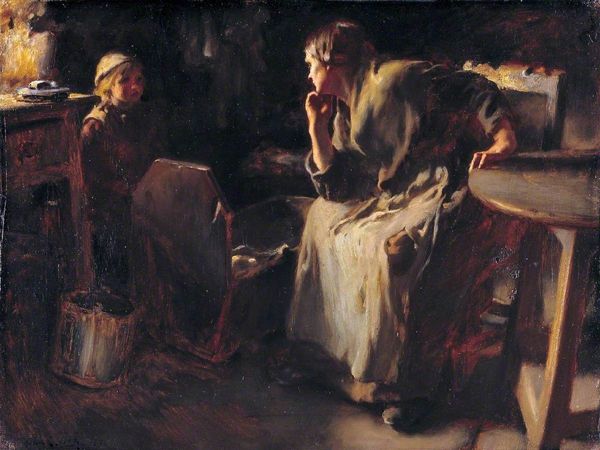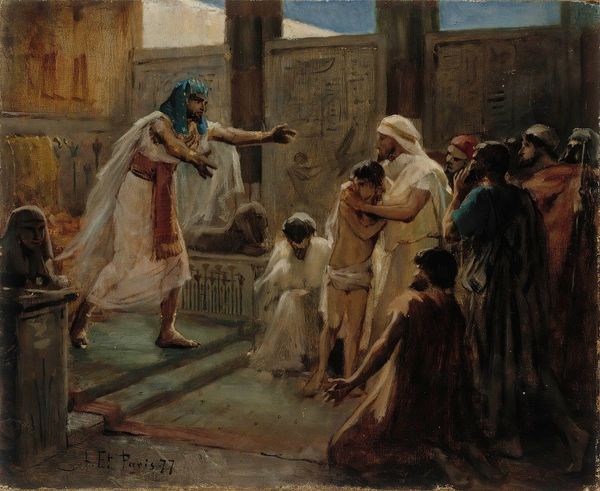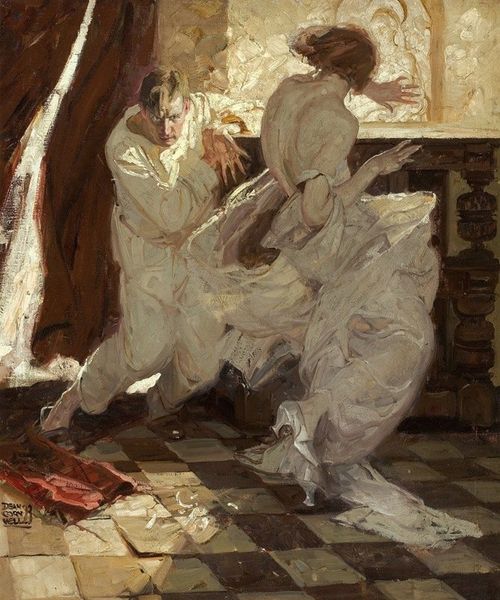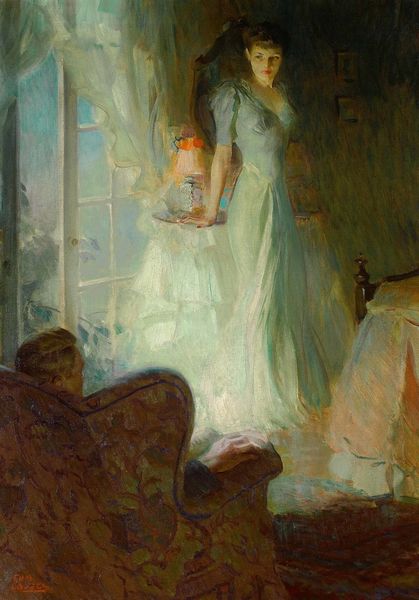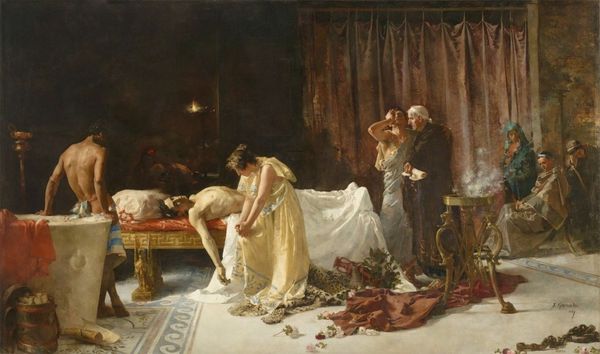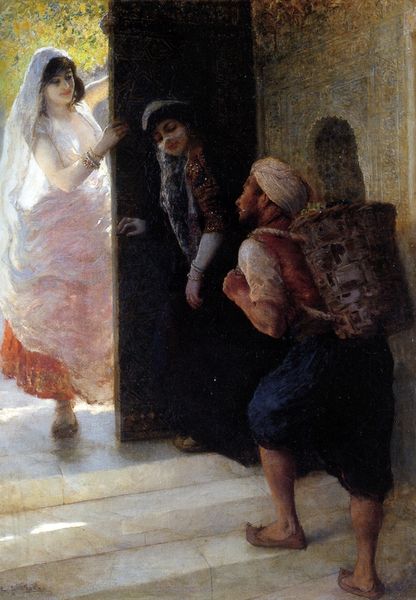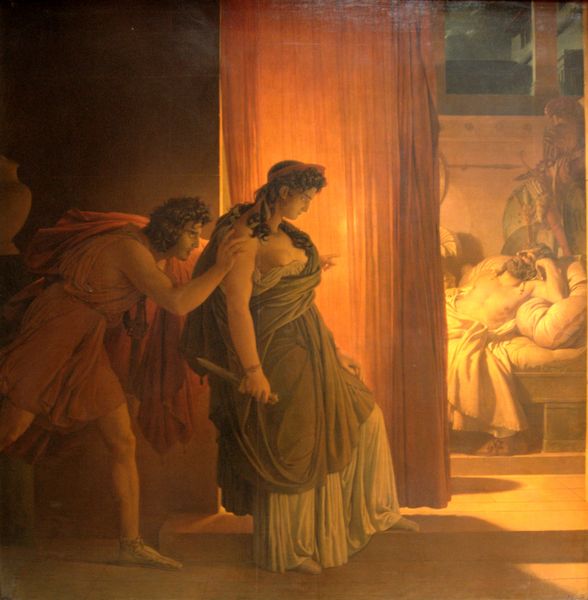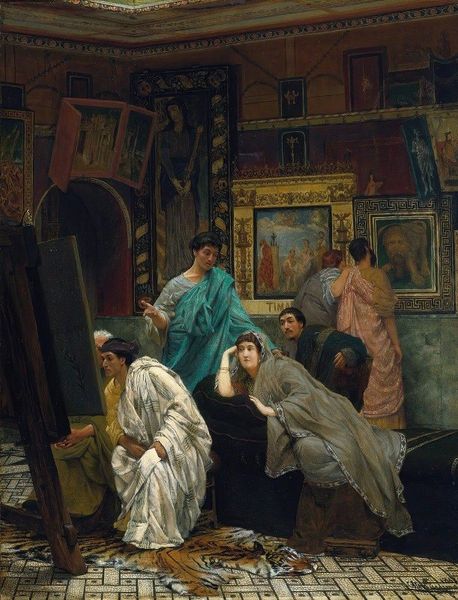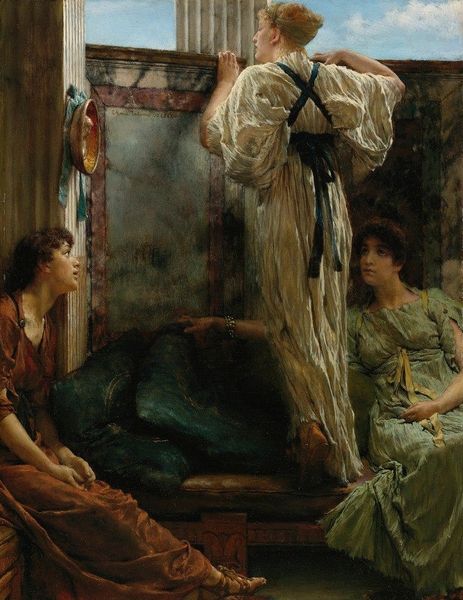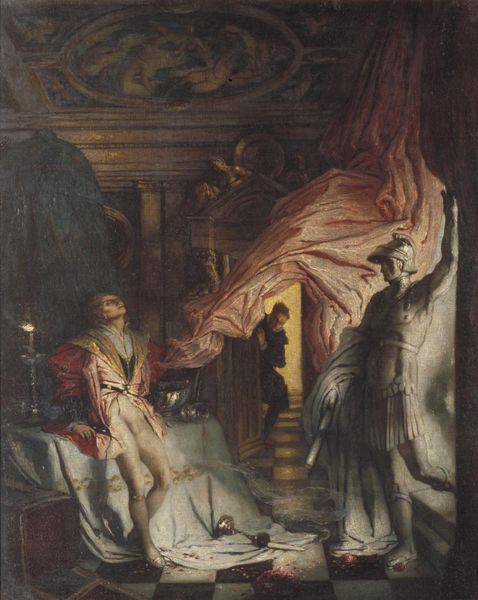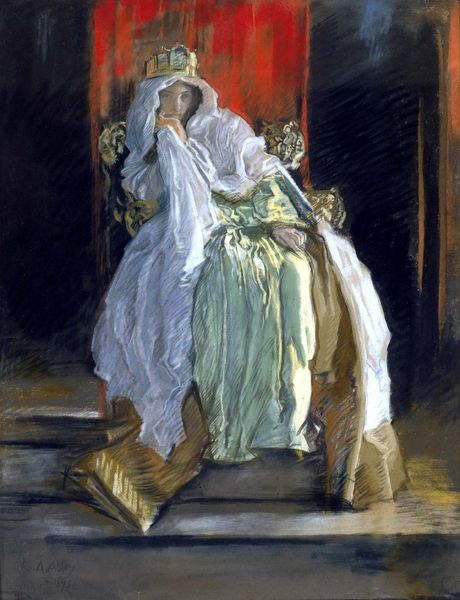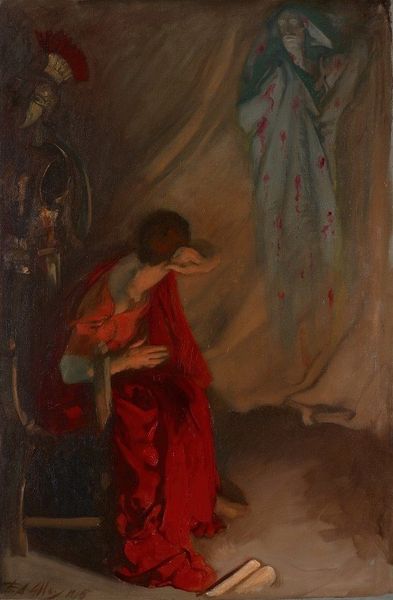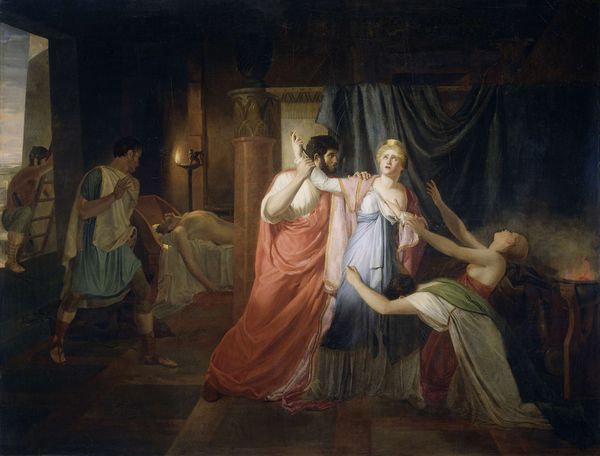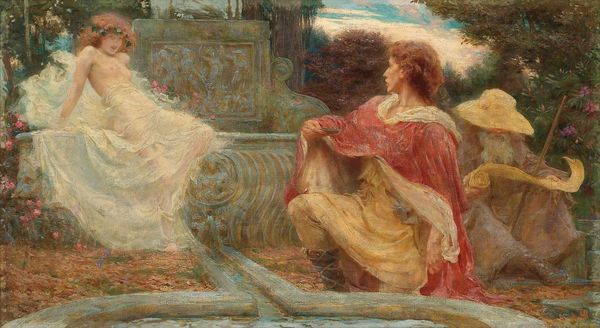
Copyright: Public domain
Curator: Nikolai Ge painted "Love of a Vestal" in 1857 using oil paints. What stands out to you at first glance? Editor: The stark contrast. The frantic energy of the figures seems to struggle against the implied stoicism of their white robes and the shadows. Curator: It's an intense moment, certainly. Ge was working within the historical painting tradition, so consider the institutional framework – academies promoting specific historical narratives. Editor: Right, history painting was about more than just illustrating the past. It was about conveying moral messages and often served the political agenda of the ruling class. The Vestal Virgin, sworn to chastity, caught in this dramatic scene…it's loaded. What transgression has she committed, or is about to? Curator: Exactly. The Roman Vestal Virgins were hugely important to the state. Their chastity was believed to protect Rome. Breaching that vow was punishable by being buried alive. Think about the societal expectations, the patriarchal control... Editor: It's like the painting is a powder keg of repressed desire and social control. This illicit encounter being dramatically revealed. And who is the bearded figure at the door? He certainly isn’t happy. His very posture suggests the disruption of order and the looming threat of punishment. The gaze and positioning of the male figure the Virgin seems to be with almost make her more of a culprit than him. Curator: It prompts us to consider who the intended audience for this type of painting might have been. Upper-class viewers likely familiar with classical history and the power structures that underpinned it. What impact did it have when exhibited publicly? Editor: One could wonder if Ge sought to question those very structures through the intense emotionality of his figures. The palpable fear, the desperation...they humanize the Vestal in a way that undermines the idealized image of her. Is she a victim of her circumstances, trapped by impossible expectations? Curator: Ge pushes those boundaries, sparking dialogue. And seeing it here today makes it all the more impactful to think about those constraints – both then, and now. Editor: Indeed. It certainly asks difficult questions. An engagement with a complicated historical precedent.
Comments
No comments
Be the first to comment and join the conversation on the ultimate creative platform.
